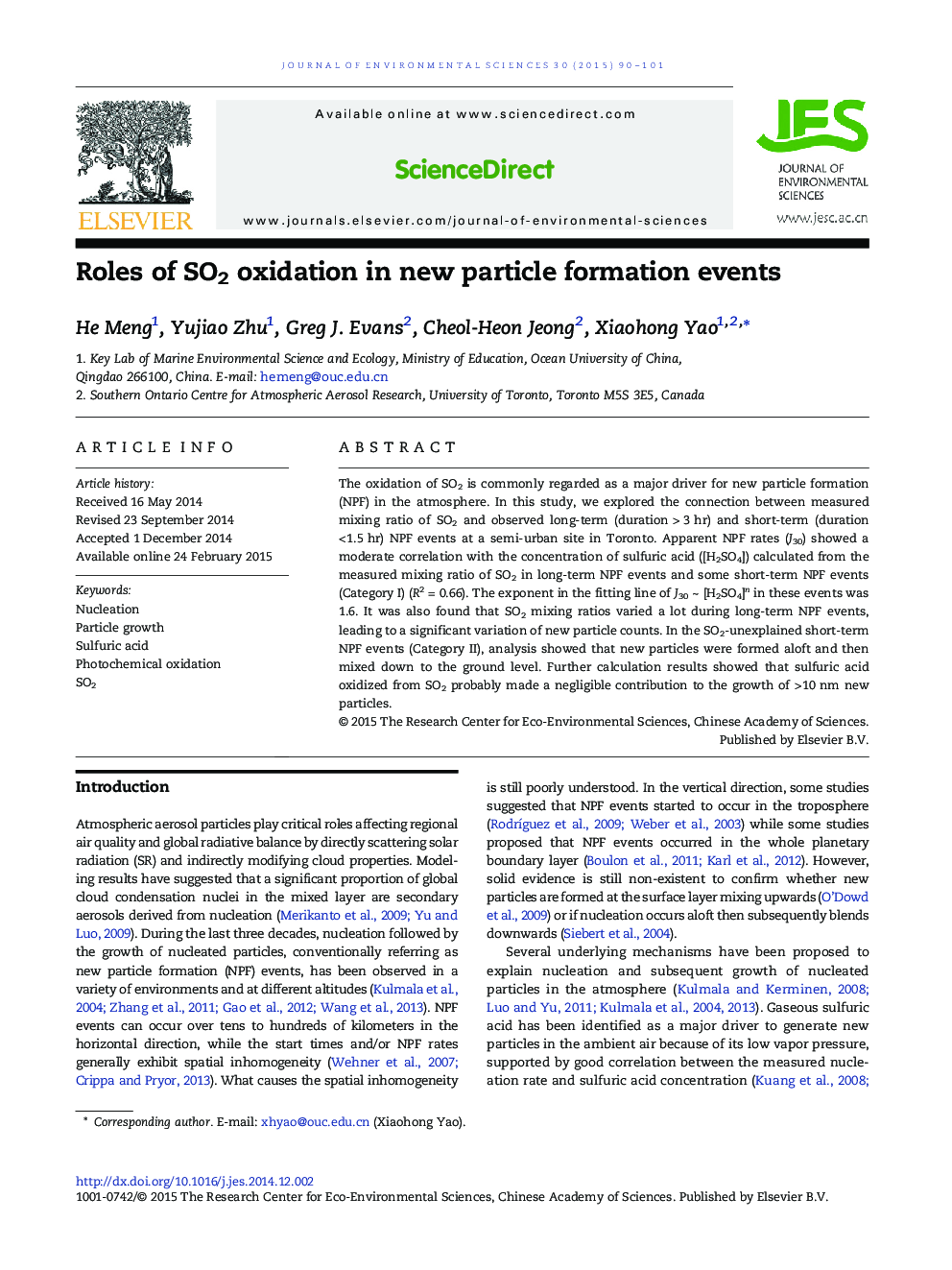| Article ID | Journal | Published Year | Pages | File Type |
|---|---|---|---|---|
| 4454109 | Journal of Environmental Sciences | 2015 | 12 Pages |
The oxidation of SO2 is commonly regarded as a major driver for new particle formation (NPF) in the atmosphere. In this study, we explored the connection between measured mixing ratio of SO2 and observed long-term (duration > 3 hr) and short-term (duration < 1.5 hr) NPF events at a semi-urban site in Toronto. Apparent NPF rates (J30) showed a moderate correlation with the concentration of sulfuric acid ([H2SO4]) calculated from the measured mixing ratio of SO2 in long-term NPF events and some short-term NPF events (Category I) (R2 = 0.66). The exponent in the fitting line of J30 ~ [H2SO4]n in these events was 1.6. It was also found that SO2 mixing ratios varied a lot during long-term NPF events, leading to a significant variation of new particle counts. In the SO2-unexplained short-term NPF events (Category II), analysis showed that new particles were formed aloft and then mixed down to the ground level. Further calculation results showed that sulfuric acid oxidized from SO2 probably made a negligible contribution to the growth of > 10 nm new particles.
Graphical abstractFigure optionsDownload full-size imageDownload as PowerPoint slide
